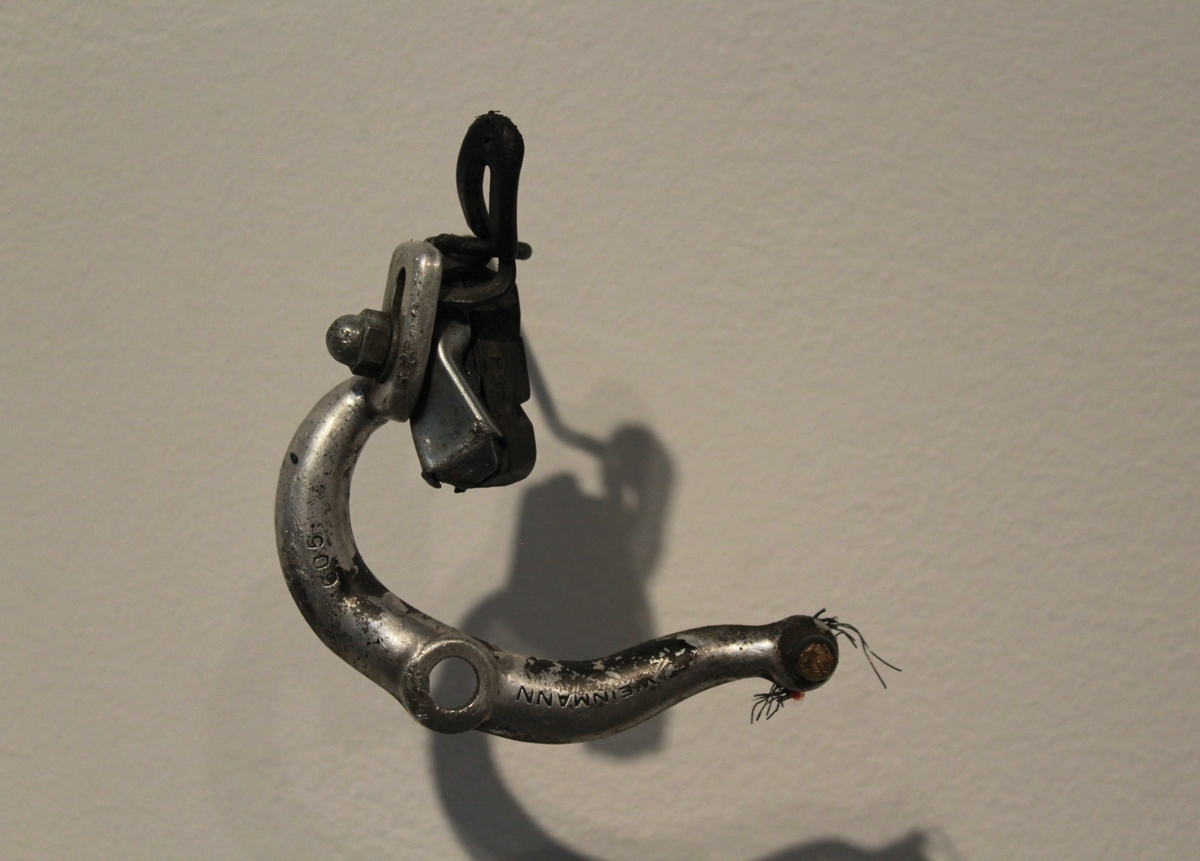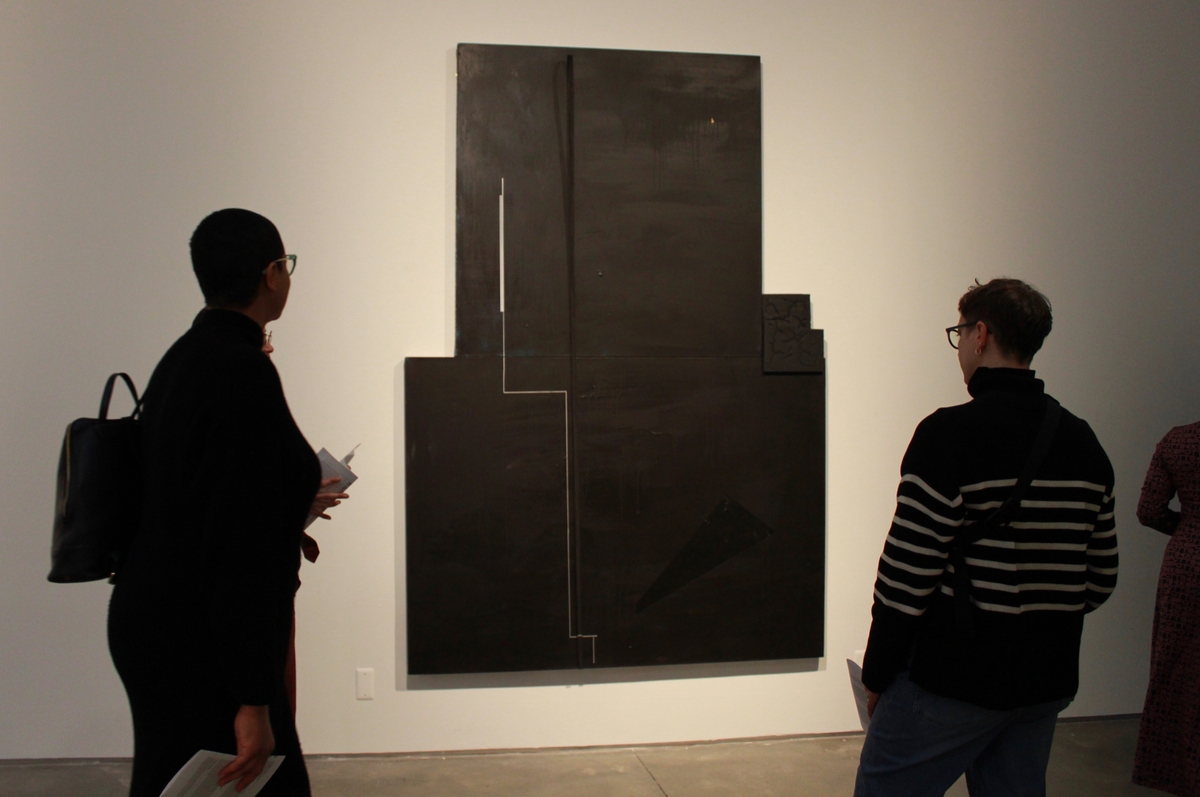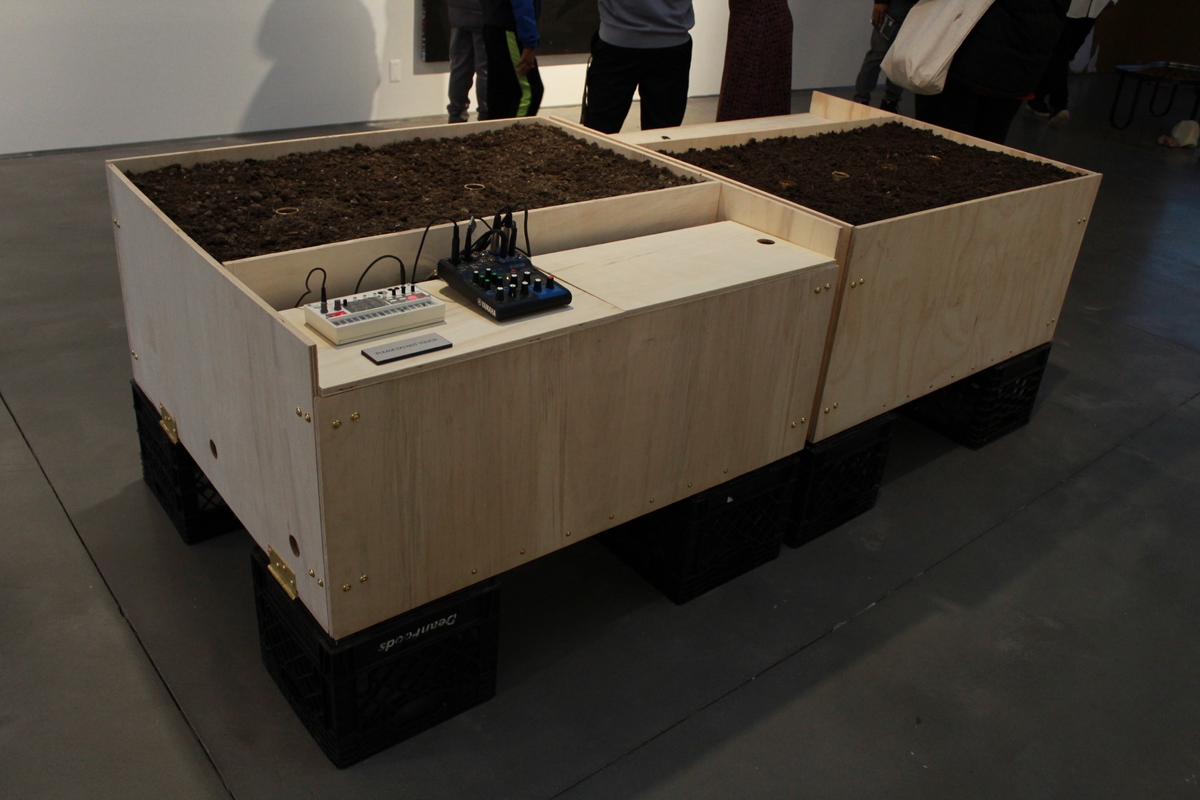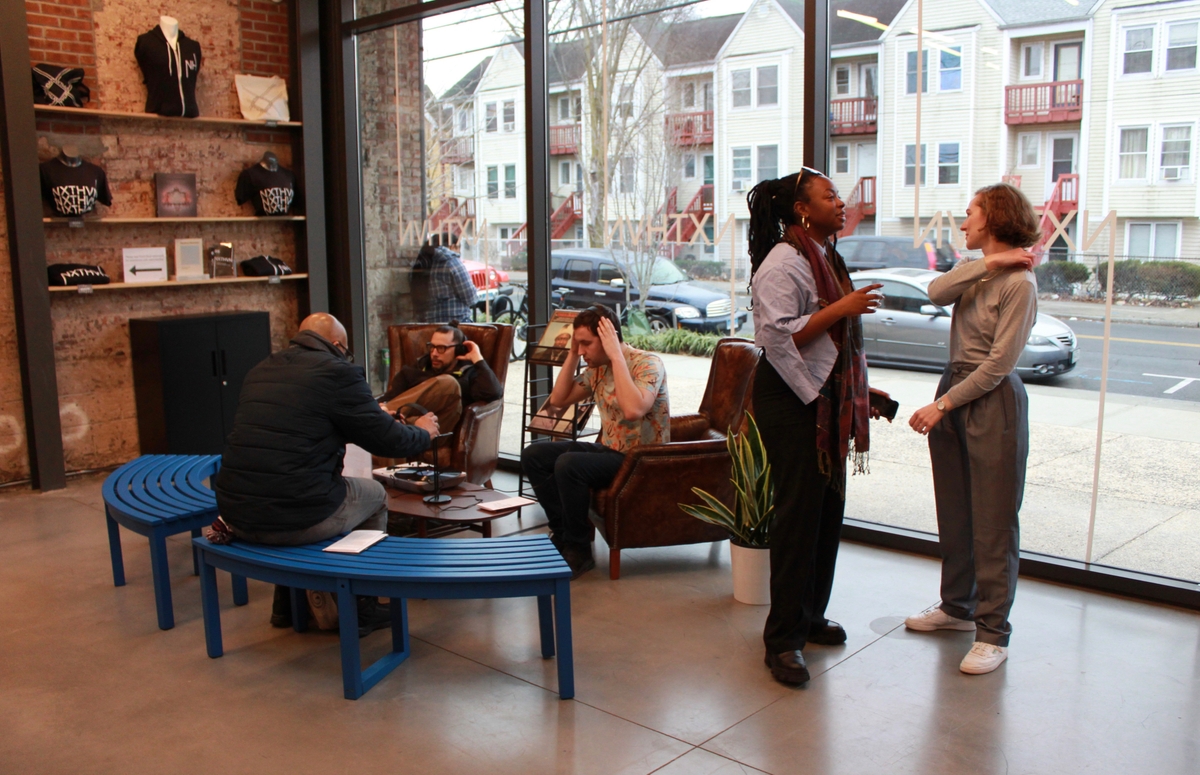
Oluseye
Good Luck Totem.
An antiquated candy vending machine sits atop a wooden stand in the lobby of NXTHVN, its faded signage and weathered hardware still beckoning the visitor to give it a coin. But it doesn’t work, and what’s inside it isn’t candy, but a multitude of cowrie shells, from sea snails found in tropical oceans. They’ve been used as money, as jewelry, and as rattles for instruments. But here, they can’t be used at all — not for any price.
Good Luck Totem is “a playful moment of reclamation,” an accompanying note states. “Cowrie shells have been used as important symbols of wealth, currency, and spiritual connection for centuries, particularly in African and African diasporic communities.” By putting the shells inside a vending machine that doesn’t work, “the artist has preserved the shells as a collection of sorts, yet one that is inaccessible to the viewer, thus pointing to the contradictions inherent in the idea of cultural preservation.”
The piece is part of “To Echo a Shadow,” running now through May 19 at NXTHVN on Henry Street. Curated by Marquita Flowers and Clare Patrick, the show, featuring the work of Ash Arder, Lungiswa Gqunta, Torkwase Dyson, and Oluseye, examines “how industrialization has compelled migration, as well as how such forced movement has generated multi-local forms of knowledge,” an accompanying note states. By “multi-local,” as the curators helpfully clarify, they mean “responding to local conditions across more than one region.”
Those regions include rural and urban places in South Africa; Detroit, Chicago, and places in the southern U.S.; and the United Kingdom and West Africa. “The artworks on view invite viewers to turn inwards — to move slowly and reflect on the ways in which the artists have employed materials like sound, smoke, and light to shape how they represent and remember experiences of migration.” Taken all together, they also offer a poignant statement on how much migrants can truly take with them, how much they leave behind, and what might stay with them whether they like it or not.

Oluseye
Eminado Series (detail).
Notably absent from the show, for example, are any pieces built around possessions that migrants may take with them — family photos, clothing, furniture, musical instruments. This is, in short, a show about migration under various forms of duress. The closest document of material culture in the exhibition is Oluseye’s Eminado Series, which consists of what the artist calls “diaspora debris” — “scavenged and collected materials, such as black reclaimed rubber and found objects removed from coastlines, taxi stands, markets, and dance floors across densely populated Black communities and neighborhoods.” They’re a record of the artist’s global travels, and also a mixture of them, as the artist makes “stark juxtapositions” out of them, such as combing toys and sharp objects. The tiny pieces are a reminder of just how little many migrants have to take with them. But the possibility of transformation still hovers in the background, as debris is made into art.

Torkwase Dyson
Indeterminacy #3 (Black Compositional Thought).
The show also reminds the viewer that migrations beget migrations. People — as individuals and as generations — often take more than one trip. In its heaviest form, millions of people were forced into slavery and brought to the United States. Many of them, and many of their descendants, undertook a second migration to escape that slavery. Torkwase Dyson’s piece brings home how harrowing both journeys could be.
The piece, the curators note, is about concealment, “as in the historical struggles of liberation practiced by those who were enslaved. Pre-abolition freedom seekers like Harriet Jacobs, Henry (Box) Brown, and Anthony Burns were among the many Black Americans who contorted their bodies into shapes that seemed humanly impossible” to fit into containers that were then used to “transport themselves out of the institution of slavery in the South.” What shape could a person take in the worn outline Dyson fixes to the wall? How many might fit themselves in at once in a desperate gamble for freedom?

Lungiswa Gqunta
Benisiya Ndawoni (detail).
Slavery still exists today, though it’s not nearly as institutionalized as it was — and many present-day migrants’ journeys remain harrowing. Lungiswa Gqunta strings razor wire across a section of the gallery, and the fact that it is sometimes decorated with flowers and other soft things only points out the precarity of the situation. The title of the piece translates to “where were you going” from isiXhosa. “Razor wire is used domestically in South Africa as a fencing material to guard homes, as well as a tool for state-sanctioned control often employed during protest marches,” an accompanying note states. The wire “stands as a vestige of tactics used during Apartheid.” But the piece isn’t devoid of hope; the artist arranges the wire to evoke people’s migratory patterns, an “intervention that invokes ancestral presence and offers guidance for the people who have traversed and will continue to navigate systemic violence through migration.”

Ash Arder
Broadcast #4.
If Gqunta offers hope for people on the move, Ash Arder is waiting for them when they arrive at their destination. The piece appears at first to be dirt in wooden frames, like large garden boxes. The soil is from Detroit, both a place of some economic hardship and a major destination for the Great Migration, people looking for a better way of life. Arder evokes all of this. As the program relates, “speakers embedded beneath the soil are connected to brass pipes that hold the seeds of collard greens. The sound emitted from the pipes is a visceral, heartbeat-like thud that plays for the duration of the exhibition.” In a closing performance for the show on May 18, the artist will add Johnny “Hammond” Smith’s album Black Coffee — recorded live at the Monterey Club on Dixwell Avenue in 1962 — to the mix. “The vibrations from this culminating sound piece will lift the seeds out of the brass tubes and across the beds of soil into a new position, ready for germination.”

Arder’s piece’s connection to New Haven is further developed back in the lobby with a listening area of “iconic records from jazz musicians who passed through Dixwell.” The curators state that “this space is for the community to listen, engage, and share.” As a part of the show, it also helps situate New Haven’s place in this global story, as a city deeply shaped by successive waves of migration. New Haven isn’t a bystander to the subject of the show; it’s an active participant, and has the scars and the strength to show for it.

The fact of New Haven as a city of migrants was easy to see at the exhibition’s bustling opening on Saturday, which featured barbecue and sides from Ricky D’s, DJ sets, and camaraderie and company inside the gallery and the adjacent spacious meeting room. But even without the crowds of people, the show still makes its point. The city is there, right outside the window.
“To Echo a Shadow” runs now through May 19 at NXTHVN on Henry Street. Visit the gallery’s website for hours and more information.

in the 1970s there was a small demonstration in the Green with a replica of the tiger cages used to hold captive POWs in Vietnam during the war. As a child my siblings and I were encouraged to climb inside and try to imagine a full grown adult being held there for months or years. They had posters and handouts about what POWs endured and the conditions they suffered to try to rally people to sign a petition to get our government to do more to negotiate to bring captives home or released. This type of display has a very impactful way of teaching history and waking people up to what has happened and what may still be happening.
You can also relate it to similar situations happening now.
The razor wire of South Africa, and the razor wire across our southern border, and the razor wire of internment camps, detainee camps, and concentration camps, and the razor wire of Ukraine, and the razor wire in urban communities around parking lots and other properties in the USA are all connected in the human condition and keeping people out or in.